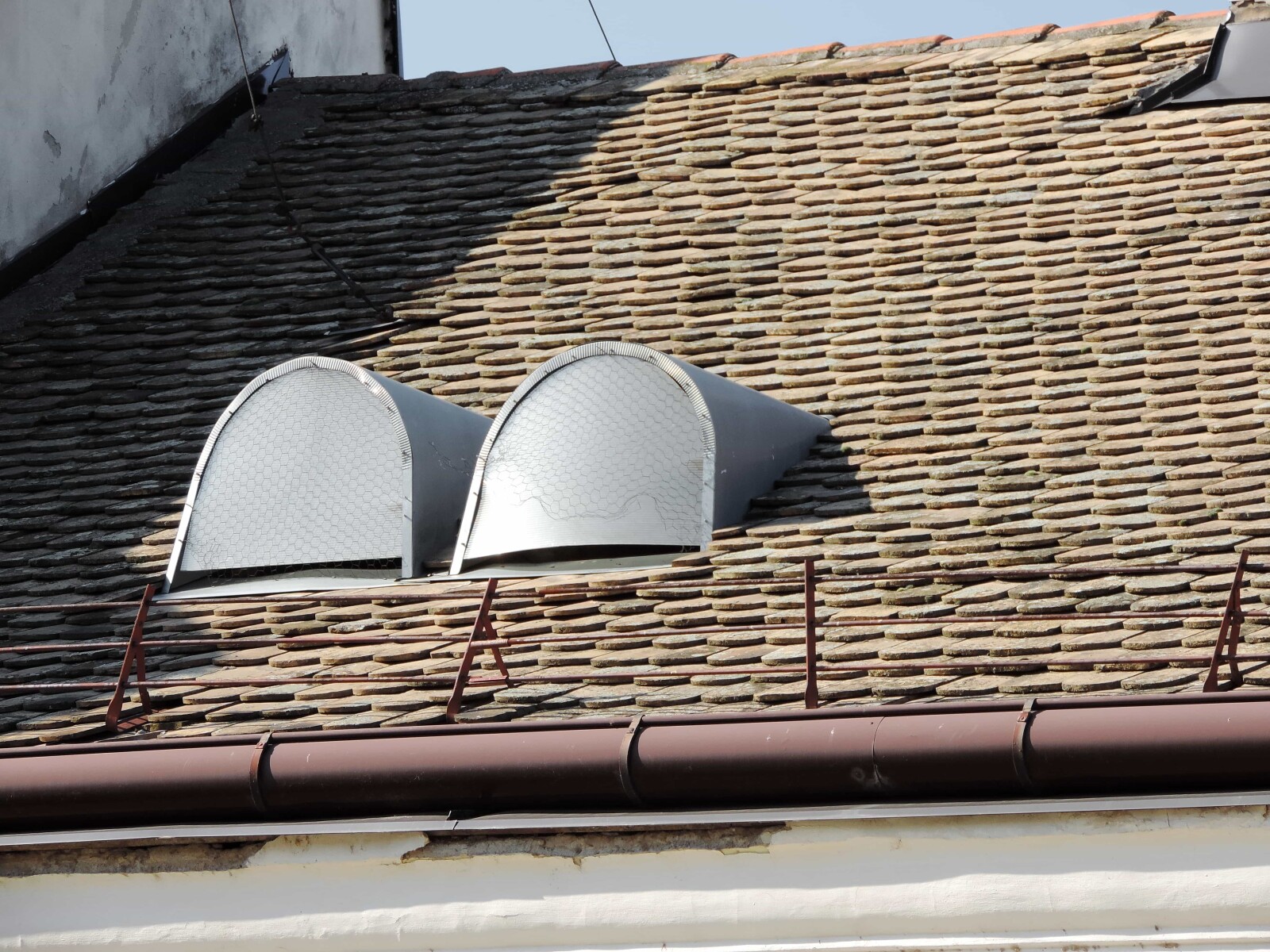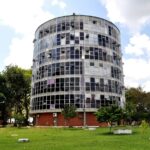Unveiling the Legacy: GAF Corporation’s Rise and Fall in the Roofing Industry
GAF Corporation, originally founded in 1886, stands today as one of the most eminent manufacturers in the roofing material industry. Through strategic mergers and acquisitions, notably the integration of Ruberoid Corporation in 1965, GAF has expanded its product offerings and solidified its market position. Despite its success, the corporation has grappled with legal complications arising from its historical use of asbestos, resulting in health repercussions for workers. To address these liabilities, GAF established an asbestos trust fund, reflecting its commitment to corporate responsibility. As it continues to address past challenges, GAF remains dedicated to innovation and quality in providing roofing solutions that cater to a diverse array of consumer needs.

Key Takeaways
- GAF Corporation, established in 1886, is a leading manufacturer of roofing materials with a global presence.
- The company faced numerous lawsuits filed by former workers exposed to asbestos in their products.
- GAF filed for bankruptcy in 2001 and created an asbestos trust fund in 2009 to compensate asbestos-exposed individuals.
- Occupations at the highest risk of asbestos-related diseases include factory workers, construction workers, and roofers, among others.
GAF Corporation History
Although GAF Corporation was initially established as the American branch of I.G. Dyes in 1886, its significant transformation began in 1939 when it acquired General Aniline Works and merged with Agfa-Ansco Corporation to become General Aniline and Film Corporation. This pivotal moment in GAF Corporation's founding established the company as an influential entity within the chemical and photographic film industries. However, the legacy of this transformation also encompasses a less auspicious aspect; workers affected by asbestos during the company's tenure as a leading asbestos materials supplier. The ubiquity of asbestos in GAF's manufacturing processes exposed numerous employees to this hazardous material, leading to a legacy of health issues and subsequent litigation that has indelibly marked the corporation's historical narrative.
Name Change and Expansion
Building upon its established foundation, GAF Corporation underwent a significant rebranding and expansion period when it changed its name to General Aniline and Film Corporation in 1939 following strategic acquisitions. This pivotal move was part of GAF Corporation's rebranding strategy, aiming to reflect the company's diversified interests and enhanced product portfolio. The new identity marked a transformative era, not just in terms of corporate branding but also in signaling the company's intent to leverage its expanded capabilities. GAF Corporation's expansion into international markets became a focal point of its growth trajectory, enabling the company to establish a strong presence globally. This strategy underscored a commitment to innovation and adaptability, hallmarks of GAF Corporation's operational ethos, as it positioned itself as a leader in its field.
Acquisition of Ruberoid Corporation
Why did GAF Corporation acquire Ruberoid Corporation in 1965, significantly bolstering its portfolio with the addition of an asbestos mine in Virginia and becoming the state's leading supplier of asbestos materials? This strategic move was aimed at expanding GAF's product offerings and market share. However, the use of asbestos in manufacturing subsequently led to serious health implications for workers, resulting in numerous worker lawsuits.
| Emotional Factor | Impact on GAF Corporation |
|---|---|
| Worker Health | Asbestos-related diseases |
| Legal Challenges | Ongoing worker lawsuits |
| Corporate Ethics | Trust fund for compensation |
The acquisition, while initially profitable, eventually imposed significant legal and ethical responsibilities on the company to address the consequences of asbestos exposure.
Asbestos Material Supply
Following the acquisition of Ruberoid Corporation in 1965, GAF Corporation became a major provider of asbestos-containing materials, which were widely used in the construction and manufacturing industries. The integration of these materials into the market necessitated stringent oversight due to the significant health effects of asbestos. Here are key points to consider:
- Asbestos Material Regulations: GAF had to navigate through a complex framework of regulations that governed the use of asbestos in materials to mitigate health risks.
- Health Effects of Asbestos: Prolonged exposure to asbestos fibers has been linked to serious illnesses, including mesothelioma and lung cancer, necessitating rigorous health and safety standards.
- Industry Transition: Over time, the industry has shifted towards safer alternatives, reducing the reliance on asbestos materials and improving health outcomes for workers and consumers.
Global Manufacturing Footprint

GAF Corporation operates numerous manufacturing facilities across several continents, reflecting its significant global presence in the roofing materials industry. The company's global manufacturing expansion is strategically aligned with its commitment to meet the increasing demand for high-quality roofing products while considering the pivotal role of environmental sustainability efforts. These efforts are integrated into their operations to minimize ecological impact, optimize resource efficiency, and conform to stringent environmental regulations. By weaving sustainability into the fabric of its global manufacturing strategies, GAF ensures that its expansion does not come at the expense of future generations. This balance between growth and responsibility underscores GAF Corporation's role as an industry leader committed to innovation and ecological stewardship.
Asbestos Exposure Impact
The exposure to asbestos through products manufactured by GAF Corporation has had a substantial impact, leading to significant health consequences for workers and their families. The long-term health effects of such exposure include mesothelioma, lung cancer, and asbestosis, which often manifest decades after initial contact with asbestos fibers. Recognizing these risks has necessitated stringent asbestos exposure prevention measures.
To engage the audience in understanding this critical issue, consider the following:
- Regulatory Compliance: Adherence to safety standards and regulations is essential for minimizing asbestos exposure in industrial settings.
- Health Surveillance: Regular health screenings for workers can lead to early detection of asbestos-related diseases.
- Educational Initiatives: Providing comprehensive training on the dangers of asbestos and safe handling practices is vital for protecting employees' health.
Litigation and Bankruptcy
Numerous lawsuits have been filed against GAF Corporation by workers affected by asbestos exposure, leading the company to seek bankruptcy protection in 2001. The onslaught of litigation challenges presented significant financial implications, compelling GAF to establish a structured asbestos trust fund to manage the liabilities and provide compensation to claimants. As a result of its bankruptcy filing, the company reorganized its financial framework to adequately address the vast number of claims while continuing its operational activities. The establishment of the trust fund exemplifies a strategic response to the intricate legal and financial landscape shaped by asbestos litigation. GAF Corporation's experience underscores the complexities that corporations face when historic product liabilities culminate in extensive legal scrutiny and substantial fiscal responsibility.
Asbestos Trust Fund Creation
In response to the mounting lawsuits due to asbestos exposure, a structured asbestos trust fund was established by GAF Corporation in 2009 to streamline the compensation process for affected individuals. The asbestos trust fund management is tasked with ensuring that all claimants receive fair compensation for the long-term effects of asbestos exposure. These effects can manifest decades after initial contact, necessitating a diligent and equitable approach to claims adjudication.
Key components of the GAF Corporation's asbestos trust fund include:
- Efficient Claims Processing: Utilizing standardized procedures to facilitate timely resolution of claims.
- Medical Criteria Compliance: Ensuring claims meet established medical criteria correlating with asbestos-related health conditions.
- Financial Oversight: Maintaining the fund's solvency and integrity to provide for current and future claimants.
Compensation for Illnesses

Regarding compensation for illnesses, GAF Corporation has established a process to address claims arising from asbestos exposure, ensuring that affected individuals receive appropriate redress for their conditions. The company has delineated clear guidelines for compensation eligibility, which include a range of asbestos-related diseases. Claimants must provide medical evidence of their diagnosis, with an emphasis on the importance of thorough asbestos screening to substantiate their claims. The technical adjudication of these claims is handled with a high degree of professionalism, ensuring that all submissions are evaluated fairly based on the established criteria. By providing comprehensive asbestos screening protocols and a structured compensation framework, GAF aims to facilitate the resolution of claims efficiently and equitably for those impacted by asbestos-related illnesses.
High-Risk Occupations
Among the various professions, factory workers, construction employees, and utility personnel are particularly susceptible to asbestos exposure due to their frequent interaction with GAF Corporation's products. Occupational health risks associated with such exposure are significant, as the health effects of asbestos can be devastating and often latent, manifesting years after initial contact.
To emphasize the gravity of these risks, consider the following:
- Factory Workers: Handling insulation, roofing materials, or tiles containing asbestos places these individuals at a higher occupational health risk.
- Construction Employees: Cutting, shaping, or installing asbestos-laden products can release harmful fibers, posing serious health effects.
- Utility Personnel: Maintenance and repair of asbestos-containing materials without adequate protective equipment can result in hazardous exposure.
These roles demand strict adherence to safety protocols to mitigate the risks associated with asbestos.
Cancer Claims Process

Given the high risk of asbestos-related diseases in certain occupations, GAF Corporation has established a claims process for individuals diagnosed with eligible cancers. Understanding the complexity of asbestos-related litigation and the prevalence of cancer misdiagnosis, GAF Corporation ensures a meticulous evaluation of claims to provide just compensation. The claims process emphasizes the importance of early diagnosis promotion, offering free screenings to facilitate the timely detection and treatment of asbestos-induced malignancies. This procedural approach is designed to streamline the provision of financial relief to affected individuals and their families, while simultaneously acknowledging the critical need for accurate diagnosis and the challenges posed by the latent nature of asbestos-related diseases. GAF Corporation's commitment to a rigorous claims process reflects its acknowledgment of the serious impact of asbestos exposure on public health.
Secondary Exposure Risks
Secondary asbestos exposure, which affects an estimated 10% of those diagnosed with asbestos-related conditions, presents a significant risk to family members of workers handling asbestos-containing materials. Prevention strategies are critical in mitigating these risks and safeguarding the health of those indirectly exposed. Understanding the long-term health effects of secondary exposure is vital for developing effective safety protocols.
- Implement Strict Decontamination Procedures: Workers must follow decontamination protocols to prevent bringing asbestos fibers home.
- Educational Programs: Inform workers and families about the dangers of secondary exposure and methods to avoid contamination.
- Protective Legislation: Strengthen and enforce laws that limit the risk of asbestos exposure at job sites, thereby reducing the chances of secondary contamination.
These measures are essential to prevent new cases and protect future generations from the devastating health consequences of asbestos exposure.
Asbestos Trust Fund Recovery
The establishment of GAF Corporation's asbestos trust fund reflects a critical resource for compensating individuals affected by asbestos-related diseases, ensuring a structured process for recovery claims. To access the fund, establishing asbestos trust fund eligibility is paramount, necessitating a definitive diagnosis correlating with asbestos exposure. Given the intricate nature of asbestos-related conditions and the potential for misdiagnosis, claimants are advised to uphold due diligence by seeking multiple opinions for diagnosis to substantiate their claims. This rigorous approach not only fortifies the credibility of the claim but also maximizes the likelihood of fair and just compensation through the trust fund mechanism, thereby providing financial relief to those afflicted by long-term occupational exposure to asbestos.
Wrongful Death Legal Support
In cases of wrongful death due to asbestos exposure, legal support is crucial for family members to navigate the complexities of compensation claims against GAF Corporation's trust fund. Expert legal counsel guides on the path to seeking justice and maximizing compensation for the loss of a loved one. The process involves:
- Case Evaluation: Analyzing the specifics of the case to determine eligibility and the potential value of the claim.
- Trust Fund Claims: Navigating the procedures of filing claims with the GAF Corporation's asbestos trust fund.
- Litigation Support: In instances where litigation is warranted, providing robust representation enhances the prospects of a favorable outcome.
Engaging with a proficient legal team is paramount to ensure that the rights of the bereaved are upheld and compensation is secured.
Legal Representation Process

Several legal firms specialize in representing individuals and families in asbestos-related cases against GAF Corporation, guiding them through the complex legal process to secure compensation. These firms possess comprehensive knowledge of the asbestos claim process and offer legal assistance for family members impacted by secondary exposure. With meticulous attention to detail, attorneys navigate the intricate legal landscape, ensuring adherence to procedural and evidentiary requirements. Their technical prowess is instrumental in substantiating claims, while their empathetic approach provides solace to affected families. These legal professionals leverage their extensive experience to advocate for their client's rights, striving to achieve just recompense from the asbestos trust fund established by GAF Corporation, thereby affirming their commitment to accountability and remediation for the harm caused by asbestos exposure.
Frequently Asked Questions
How Does GAF Corporation Ensure the Safety and Compliance of Its Current Roofing Materials With Modern Health and Environmental Regulations?
To ensure safety and compliance, rigorous material testing is conducted, analyzing each product for potential hazards. Through meticulous regulatory monitoring, adherence to health and environmental standards is a paramount commitment. This technical diligence reflects an experienced approach to manufacturing, aimed at safeguarding both consumers and the environment. Such vigilance is crucial for industry leaders in the production of roofing materials to maintain trust and demonstrate corporate responsibility.
What Are GAF Corporation’s Initiatives or Contributions to Sustainability and Green Building Practices in the Construction Industry?
In the realm of sustainable construction, initiatives often encompass the development of eco-friendly materials and the implementation of recycling programs. Such efforts are critical for reducing the environmental impact of building practices. A notable contribution in this field is the production of eco-friendly shingles designed for enhanced energy efficiency and durability. Additionally, recycling programs for construction waste reflect a proactive approach to minimizing resource depletion and promoting a circular economy within the industry.
How Does GAF Corporation Support the Communities Where It Operates, Particularly in Terms of Local Employment and Corporate Social Responsibility Programs?
Supporting local communities, particularly through employment and corporate social responsibility programs, is a crucial aspect of a company's societal impact. Fostering community engagement and conducting philanthropic efforts are key components of this support. These initiatives can involve creating jobs, sponsoring local events, providing educational opportunities, and collaborating with local organizations to address specific community needs, thereby contributing to the overall economic and social well-being of the areas where a company operates.
What Are the Latest Innovations or Technological Advancements That GAF Corporation Has Introduced in the Roofing Materials Market?
Recent advancements in the roofing materials sector include the development of Smart Shingles, designed to enhance energy efficiency in buildings. These innovative roofing solutions incorporate cutting-edge technology to reduce heat absorption, thereby lowering cooling costs and promoting sustainable living. As industry leaders pursue more eco-friendly options, such materials play a crucial role in advancing environmental stewardship while providing practical benefits to homeowners and commercial operators alike.
How Does GAF Corporation Address the Ongoing Education and Training Needs of Contractors and Installers to Ensure Proper Installation and Maintenance of Their Roofing Products?
To adeptly equip contractors and installers, a comprehensive program is often deployed, weaving a tapestry of knowledge with certification programs at its core. These initiatives meticulously delineate installation guidelines, ensuring a mastery of skills necessary for optimal performance. The resulting craftsmanship not only reflects technical prowess but also upholds stringent industry standards, fostering a legacy of excellence in product stewardship and customer satisfaction.




